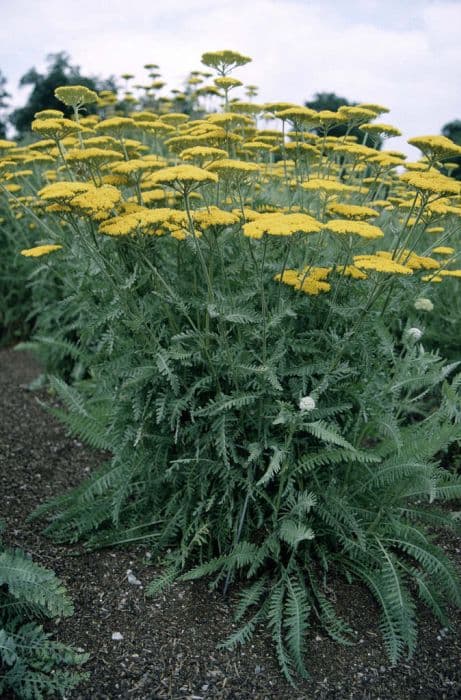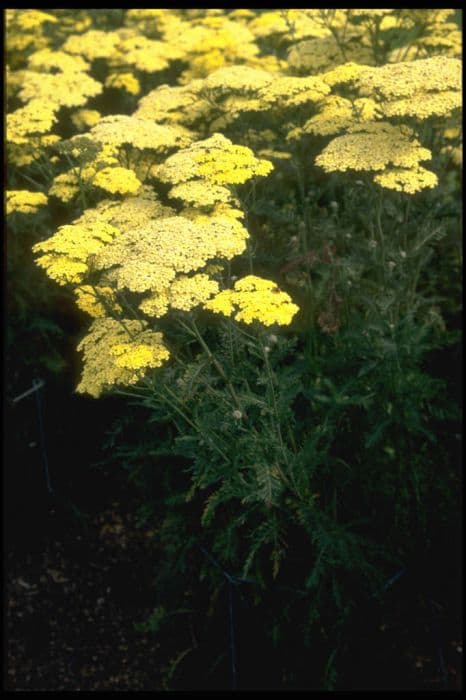Pinkscale Blazing Star Liatris elegans

ABOUT
Liatris elegans, commonly known as the pinkscale blazing star or elegant gayfeather, is a perennial plant that is well-known for its striking and attractive appearance. Central to its charm are the fluffy, plume-like flower spikes that exhibit a delicate rosy pink or purplish color. These feathery flower heads are densely clustered along erect stems and give the plant a soft, textured appearance. The leaves of the pinkscale blazing star are narrow and long, resembling grass blades, and are typically a rich green color, providing a lovely contrast to the vibrant blooms. The foliage may decrease in size as it ascends the stem, focusing attention upwards towards the flowers. The elegant gayfeather's overall form and structure contribute to an upright and somewhat spiky visual impression in the garden, with the bold, linear leaves emphasizing the vertical thrust of the flowering spikes. During the blooming season, this plant dazzles with its slender, tapering flower spikes that draw a variety of pollinators, such as butterflies and bees, adding movement and life to the visual display. The blooms often open from the top down, creating a unique display that lasts for a considerable period. The appearance of the pinkscale blazing star, with its charming flowers and pointed leaves, makes it a popular choice for gardeners looking to add vertical interest and a splash of color to their flower beds or naturalized meadows.
About this plant
 Names
NamesFamily
Asteraceae
Synonyms
Pink-Scale Blazing Star, Pinkscale Gayfeather, Pinkscale Blazing Star, Pinkscale Liatris
Common names
Lacinaria elegans, Kuhnia elegans.
 Toxicity
ToxicityTo humans
Pinkscale blazing star (Liatris elegans) is not commonly recognized for its toxicity to humans. There is little to no documented evidence to suggest that ingestion or contact with this plant leads to poisoning or adverse health effects in people. Consequently, symptoms of poisoning are not well defined. As with many plants, individuals may have varying degrees of sensitivity that could lead to mild irritation, but any significant toxic reactions from exposure to Pinkscale blazing star are not commonly reported or expected.
To pets
Pinkscale blazing star (Liatris elegans) is also not widely known to be toxic to pets. There is limited information on its effects when ingested by animals such as dogs and cats. Due to the lack of records of toxicity, no specific symptoms of poisoning are generally associated with this plant. However, as with any non-food plant, ingestion may potentially cause gastrointestinal upset, such as vomiting or diarrhea, in some pets due to individual sensitivities or as a result of consuming an unusual substance. It is generally advisable to prevent pets from eating ornamental plants to avoid any potential issues.
 Characteristics
CharacteristicsLife cycle
Perennials
Foliage type
Deciduous
Color of leaves
Green
Flower color
Purple
Height
2-4 feet (60-120 cm)
Spread
1-2 feet (30-60 cm)
Plant type
Herb
Hardiness zones
7
Native area
North America
Benefits
 General Benefits
General Benefits- Attracts pollinators: Liatris elegans is known for attracting butterflies and bees, which can help pollinate other plants in the garden.
- Easy to grow: It is a hardy plant that requires minimal care, making it suitable for beginners.
- Drought resistant: Once established, it can tolerate periods of low water, making it ideal for xeriscaping or gardens in arid climates.
- Enhances biodiversity: By attracting various pollinators, it helps in promoting ecological balance in the garden.
- Aesthetic appeal: With its striking purple flowers, it adds color and visual interest to landscapes and gardens.
- Perennial growth: As a perennial, it returns each year, providing long-term presence without the need for replanting.
- Soil erosion control: Its root system can help stabilize soil and prevent erosion.
 Medical Properties
Medical PropertiesThis plant is not used for medical purposes.
 Air-purifying Qualities
Air-purifying QualitiesThis plant is not specifically known for air purifying qualities.
 Other Uses
Other Uses- Liatris elegans, commonly known as the Pinkscale Blazing Star, can be used in butterfly gardens to attract a variety of butterflies due to its nectar-rich flowers.
- Because of its unique and striking appearance, Pinkscale Blazing Star is often used in dried flower arrangements, retaining its color and shape well after drying.
- This plant is sometimes incorporated into rain gardens, as it can tolerate occasional wet conditions while helping to control water runoff.
- Liatris elegans can function as a natural pest deterrent in gardens due to its scent and properties that are unattractive to certain garden pests.
- The tall and distinctive flowering spikes of the Pinkscale Blazing Star are utilized in native landscaping to add vertical interest and diversity to plantings.
- Due to its deep root system, the Pinkscale Blazing Star is beneficial for soil stabilization and preventing erosion on slopes or banks.
- Pinkscale Blazing Star's seeds are a food source for birds, making it an excellent choice for bird-friendly gardens or habitats.
- Craft enthusiasts may use the Pinkscale Blazing Star's tall stems and fluffy blooms as components in making natural wreaths and other decorative items.
- The robust nature of the Pinkscale Blazing Star allows it to be used for educational purposes in school gardens or ecological studies due to its low maintenance and native status.
- Photographers and artists can take advantage of the plant's visually striking blooms as subjects for photography, painting, and other visual art forms.
Interesting Facts
 Feng Shui
Feng ShuiThe Liatris elegans, more commonly known as Blazing Star, is not used in Feng Shui practice.
 Zodiac Sign Compitability
Zodiac Sign CompitabilityThe Blazing Star is not used in astrology practice.
 Plant Symbolism
Plant Symbolism- Pride: The Liatris elegans, commonly known as Pinkscale Blazing Star or Elegant Gayfeather, holds itself with a regal, upright posture, symbolizing self-respect and personal pride.
- Independence: This plant’s ability to thrive in tough environments and its individual, distinct flower spikes represent autonomy and self-reliance.
- Joy and Happiness: The vibrant, fluffy flower spikes of the Pinkscale Blazing Star add brightness to any setting, symbolizing joyfulness and bringing happiness to those who observe it.
- Attraction: Just as it attracts butterflies and hummingbirds, the Pinkscale Blazing Star is also a symbol of allure and the power to attract others.
- Spiritual Ascension: The spiky, ascending shape of the Pinkscale Blazing Star's blooms resembles a wand or torch, symbolizing spiritual growth and the pursuit of higher knowledge.
 Water
WaterFor the Blazing Star, establish a watering schedule that involves deep watering to encourage a strong root system. Water these plants once a week, providing about one inch of water each time, which translates to roughly 0.623 gallons per square yard of soil. During particularly dry periods, you may need to water twice a week, while in times of rainfall, you can cut back. Reducing watering as the plant enters dormancy in late fall is advised. It's essential not to overwater, as Blazing Star prefers well-drained soil and may suffer from root rot if left in standing water.
 Light
LightThe Blazing Star thrives in full sunlight conditions, requiring a minimum of six hours of direct sun each day. The ideal spot for these plants would be an area with unobstructed exposure to the sun's rays, such as a southern-facing garden bed. Partial shade can be tolerated, but it may impede the plant's blooming and overall vigor.
 Temperature
TemperatureThe Blazing Star flourishes in moderate to warm temperatures, ideally between 60 and 70 degrees Fahrenheit. While it can withstand temperatures as low as 20 degrees Fahrenheit, prolonged exposure to such cold can be detrimental. Conversely, it can survive high temperatures up to around 90 degrees Fahrenheit, but optimal growth occurs within the moderate range suggested.
 Pruning
PruningPruning the Blazing Star is generally done to maintain plant shape and encourage new growth. It's best to prune or deadhead spent flower spikes after blooming to promote a second bloom and prevent self-seeding if desired. For general maintenance, cut back the foliage to the ground in late winter or early spring before new growth starts. This annual pruning helps to keep the plant tidy and healthy.
 Cleaning
CleaningAs needed
 Soil
SoilPinkscale blazing star thrives in a well-draining soil mix with a pH between 6.0 and 7.0. A mixture of loam, sand, and peat is ideal to provide the necessary drainage and nutrient support.
 Repotting
RepottingPinkscale blazing star typically does not need frequent repotting and can be done every 2-3 years or when the plant outgrows its pot.
 Humidity & Misting
Humidity & MistingPinkscale blazing star prefers moderate humidity levels, though it is quite adaptable and can tolerate lower humidity common in most home environments.
 Suitable locations
Suitable locationsIndoor
Ensure bright light, well-draining soil; water when soil is dry.
Outdoor
Plant in full sun, well-draining soil; water moderately.
Hardiness zone
4-10 USDA
 Life cycle
Life cycleLiatris elegans, commonly known as Pinkscale Blazing Star or Elegant Gayfeather, begins its life cycle as a seed that germinates after a period of winter stratification or exposure to cold temperatures. The seed develops into a small rosette of narrow leaves close to the ground in its first year, as it is a perennial plant. In the following years, the plant develops a strong, upright stem and a more extensive root system, with each stem capable of producing multiple flower heads during the summer or early fall. The striking, purple-pink flowers attract a variety of pollinators, including bees and butterflies, leading to cross-pollination. After pollination, the flowers yield seeds by late autumn, which are dispersed by wind or wildlife. As winter approaches, the above-ground parts of the plant die back, while the root system remains alive, allowing the life cycle to begin anew in the spring.
 Propogation
PropogationPropogation time
Spring to early summer
Liatris elegans, commonly known as the Pinkscale Blazing Star, is often propagated through its corms, which is the most popular method. The propagation by corms usually takes place in the fall after the foliage has died back. To propagate by corms, gardeners should dig up the corms carefully, avoiding damage to them. Once dug up, the corms can be separated if they have produced offshoots, which often happens naturally as the plant matures. The individual corms should then be planted about 3 to 4 inches deep (7.6 to 10.2 centimeters) and spaced approximately 12 inches apart (30.5 centimeters) in well-drained soil with good exposure to sunlight. Water the newly planted corms thoroughly to establish them. This method of propagation allows for clumping and naturalizing over time, creating a more robust display in the garden.









